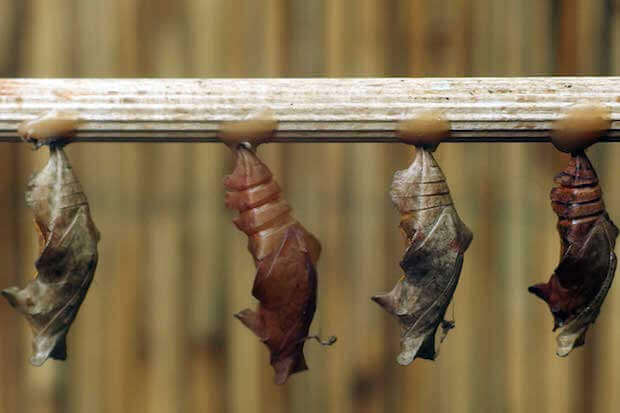
Real-life projects can leave a long-lasting impression on kids. In this article we’ll give you three great projects you can do in your classroom to teach kids the amazing science behind transformations in nature and metamorphosis.
This lesson can be used as a follow-up, or introduction into another lesson on our blog about autumn nature changes:
Science lesson: teach students about autumn’s nature changes
A simple project such as making raisins can introduce the topic of transformations in nature
This is probably one of the easiest science experiments you can do with kids. If you show a regular group of kids a bunch of round juicy grapes and some dark, dry, and wrinkly raisins, they’ll probably tell you they look nothing alike and don’t even taste the same! So this is a great lesson to introduce kids to how nature transforms itself from one thing to something completely different.
This lesson ties in with teaching kids about the properties of sunlight. You can put kids into small groups. Then give each group a bag of about 10-20 grapes. Designate a spot in the classroom for each group to place their bunch of grapes, preferably a sunny one. According to planet-science.com, it can take as little as three sunny days (if you leave them outside) for grapes to transform into raisins. If you leave them in your classroom it may take longer, up to two weeks according to learnplayimagine.com.
But, while waiting, you can get your students to check the progress of this natural transformation every other day. They can make notes of the change in colour and shape. And at the end, they get to enjoy their project by eating it!
Teach kids about one of the most amazing transformations in nature by studying the butterfly life cycle
Probably one of the most known natural transformations is that of a caterpillar becoming a butterfly. You can start by reading the classic book ‘The Very Hungry Caterpillar.’ You can then show your classroom a short video clip documenting this natural transformation. Here are three possible clips:
- Growing up Butterfly
- Amazing Life Cycle of a Monarch Butterfly
- Metamorphosis From Caterpillar To Butterfly
Depending on the kids’ ages, you can then do a simple craft activity such as this one made with different types of pasta. Or this more elaborate one showing the actual metamorphosis.
If you would like for the kids to see first hand this incredible transformation of nature, you can raise live butterflies in the classroom! As the butterflysite.com states, you can either go find your own butterfly eggs and get the appropriate tools for rearing them. Or you can buy a butterfly kit online.
Side note: need help learning how to find educational crafts online? Check out our blog article on using Pinterest to do so:
How to find educational crafts and activities on Pinterest
Teach kids about the metamorphosis of a tadpole into a frog
The life cycle of a frog is another great way of teaching kids about metamorphosis and transformations in nature. There are a number of books that can introduce this topic to kids. ‘From Tadpole to Frog’ by Wendy Pfeffer, may be a good one to start with. Stillplayingschool.com has a great craft of a frog’s life cycle using recycled materials. And here is a great site with a bunch of other different resources on the life cycle of frogs.
Depending on the laws where you live, your school regulations, and your own personal beliefs, it is possible to raise tadpoles in the classroom for a more hands-on approach. Exoticpets.com begins with a warning for this activity, but then outlines the different steps needed to make this a successful experience. Mum, teacher, and marine biologist Cerys from rainydaymum.co.uk, has successfully raised tadpoles with her children and outlines all the steps she’s taken on her site.
Related lessons:
A related lesson on this topic of raising tadpoles is on invasive species. Since raising tadpoles and then releasing them into the wild could pose environmental restrictions, this can be a great segway into another lesson on our blog:
Focused Lesson — teaching kids about invasive species
Also, did you know salmon go through changes when they return to their birthplace to spawn? See our other article on teaching kids about this topic:
Focused science lesson: teaching kids about salmon controversies during the B.C. salmon run
Make science lessons memorable by using these hands-on activities on natural transformations in your class!




